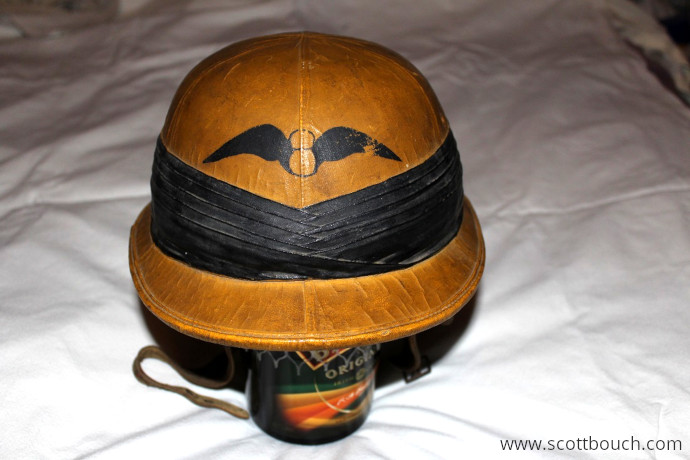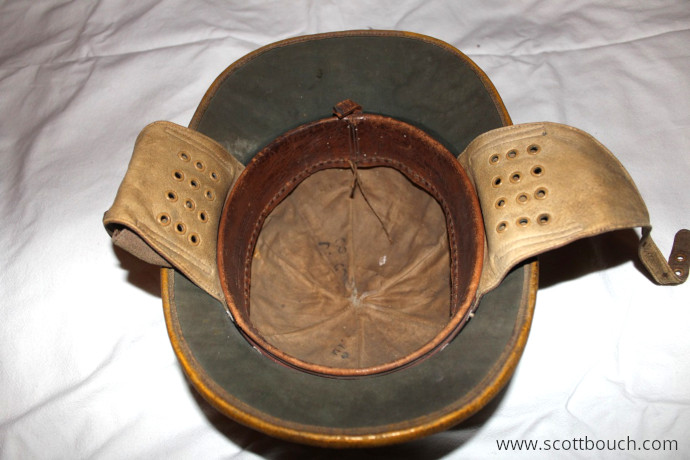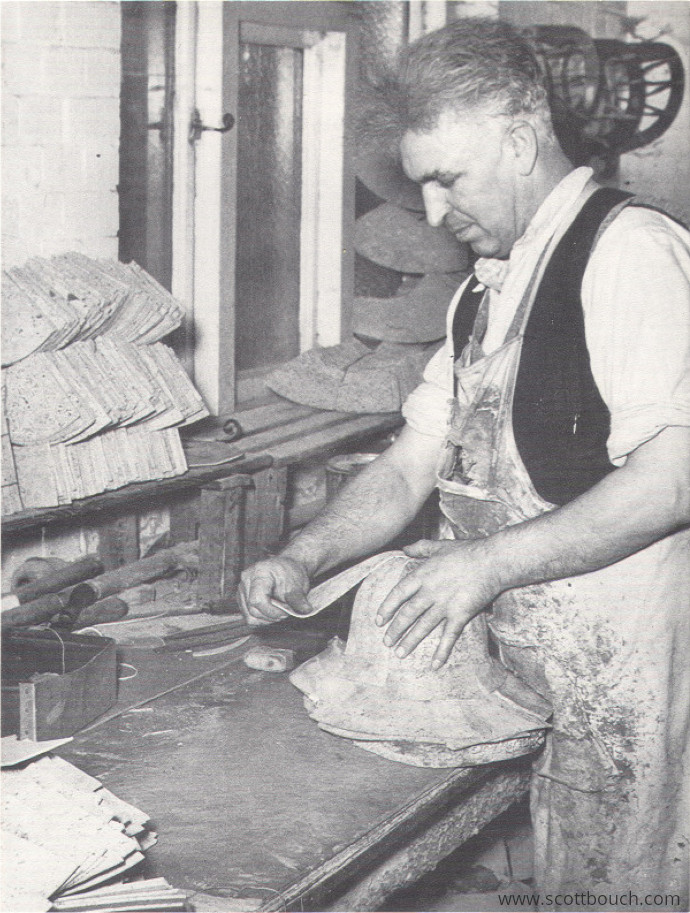British "commonly known as" A-Type Aircrew Flying Helmet;
Air Ministry Stores Ref 22C/13
Amongst the collectors and historians I've spoken to, there appears to be a school of thought that no helmet was actually ever designated as an A-Type, as there's a distinct lack of documented evidence. However, some argue that since there was a B-Type, there sureley must have been an A-Type. (Note: These are both assumptions / opinions). These arguments are open to debate until some real evidence turns up, such as a helmet that states A-Type or Type A on its label, or indeed the Stores Ref no: 22C/13, or some other sort of substantiated documented evidence.
What we can say is that there is a helmet type commonly referred to as A-Type, but formally known by it's stores ref number 22C/13. In this instance, we must assume the one Stores Ref number catered for all sizes / variations, as later helmets used different stores ref no's for different sizes.
The widely accepted, and used, description between collectors and historians of what is commonly referred to as an A-Type helmet is: A broad-rimmed cork tropical helmet of an overall design typical of traditional tropical pith helmets, but with flaps at the sides capable of housing earpieces for Gosport Tubes or receivers, the flaps terminating in a chin strap and buckle.
A few things I've learnt about flying equipment that's relevant here: nothing is simple; few things are logical; sequences are not alwats chronological; always expect to be surprised; and making assumptions can make an ass out of you! - So I'm not stating this is a type A, but it may well be.
Reputable Books
Flying Clothing: The Story of Its Development
The term Type-A is used in the book Flying Clothing: The Story of Its Development by Greer and Harold. It appears that all online references to this helmet almost exactly quote this single source of information, ie: I can't find any other sources to verify the term Type-A apart from this one book.
Quote:
The Type-A cork aviation helmet was used in the years between the wars by aircrew stationed east of Malta. It had a smaller brim than the contemporary Wolseley helmet and not unlike the pith hat or Baghdad bowler introduced in 1938. Because it was designed to be worn in flight it had two khaki earflaps which extended into a chin-strap to keep the helmet in position.
This extract mentions a "Baghdad Bowler"; I am led to believe this may be a mistake in the book, and probably should read "Bombay Bowler" instead.
This book also describes the Air Ministry stores reference number and description in Appendix I.
Quote:
22C/13 Helmets, cork, aviation,-issued E of Malta for summer wear - Type A
Exhibit
"Commonly known as" A-Type Helmet, 8 Squadron, painted yellow and black
This helmet was recently acquired by a friend, who kindly took these images for me.
The helmet has been customised with 8 Sqn winged logo, and has been painted yellow and black, making it quite unique.
Wikipedia entry on 8 Squadron.



Factory Image
Taken from the book "HELMETS: The Story of Helmets Limited, 1924 - 1984", this image from the Helmets Ltd factory shows Fred Hodgins "knocking on" a tropical helmet shell cut from a sheet of cork; each layer was glued down, forming a light but strong laminate. While probably not a RAF issued A-Type helmet as I can't find any evidence of Helmets Ltd making the 22C/13, this part of the manufacturing process would still be relevant.

Search for evidence
If anyone reading this has any factual information / evidence, or indeed a helmet labelled as an A-Type / Type A, please do get in touch as it'll help to re-write this article!